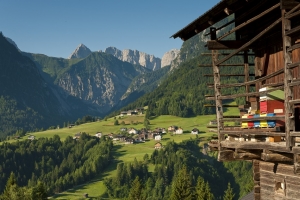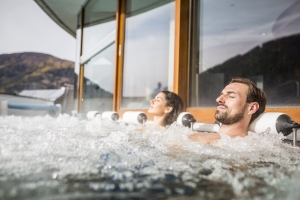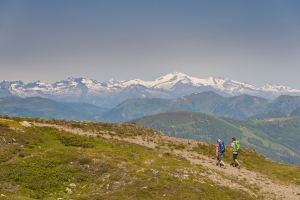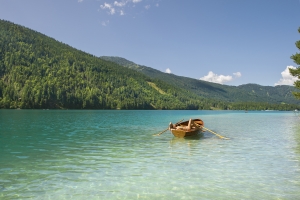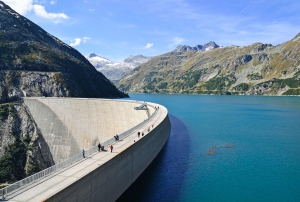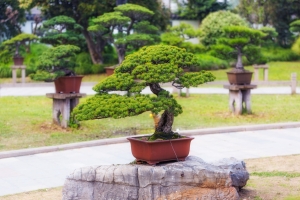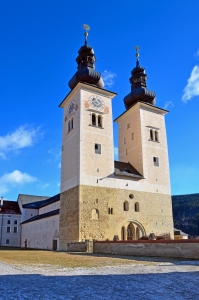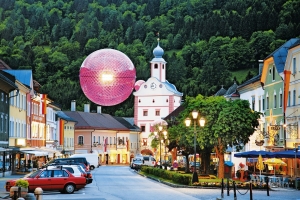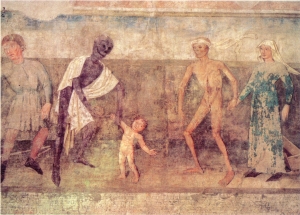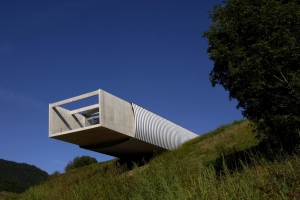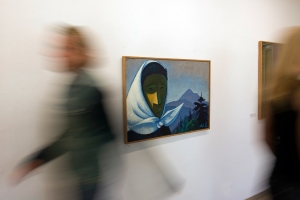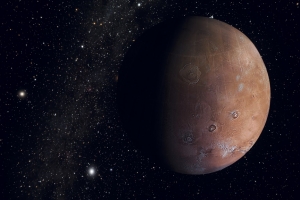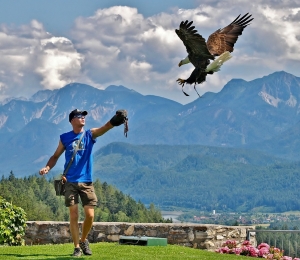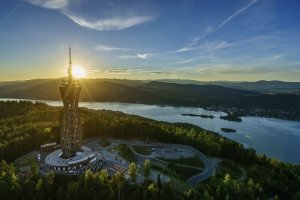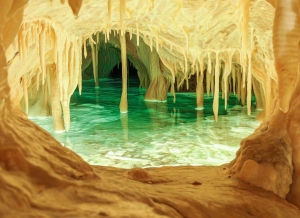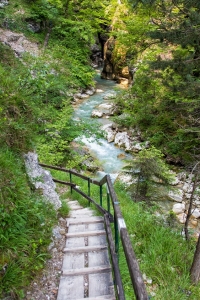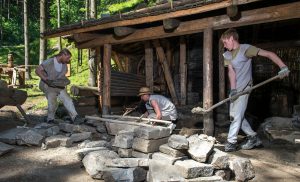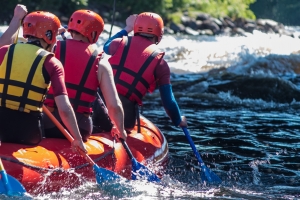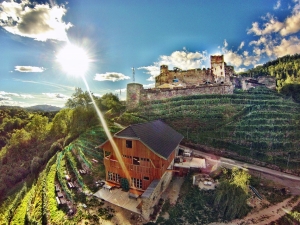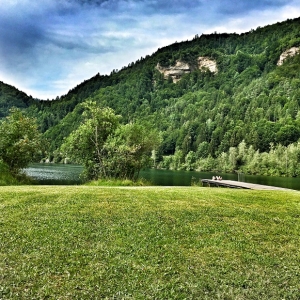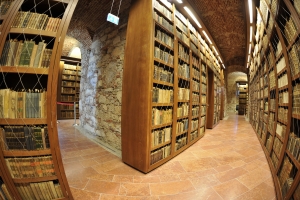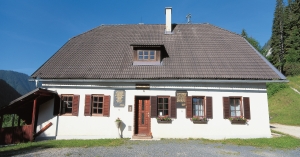Twentyfour places in Carinthia that will fill you with wonder
Carinthia/Kärnten/Koroška has lots to offer and a little bit more besides: Wanting to live, work and study right at the heart of a breath-taking natural environment, in the cultural melting pot between the Alps and Adriatic, and in innovative, open surroundings, more and more young people are discovering the southernmost state in Austria, home to around 560,000 people. Here we introduce you to some of the hotspots waiting to be explored in Carinthia.
1 – Nature at its best: Lesachtal valley
For everyone who likes to slow things down and take a relaxed approach to life. Lesachtal is the valley in Europe most untouched by man. Here in the south-west of Carinthia at the border with Italy heading towards East Tyrol, stressed minds can unwind and find peace and quiet while gazing over the impressive peaks, lush meadows, and tiny villages. Only around 1,300 people live in this remote community. The part of the Lesachtal that lies in East Tyrol became known the world over when a three-minutes sequence of the James Bond film “Spectre” featuring Daniel Craig was shot in Obertilliach in 2015.
2 – Relax: Roman thermal baths in Bad Kleinkirchheim
Sit back in the bubbling whirlpool and watch the skiers wind their way down the mountain from the warm thermal springs in Bad Kleinkirchheim, which cover an area of 12,000 square metres. The baths with their impressive architecture are split into two areas. While the thermal springs provide various bathing opportunities, including a large out-door pool for all ages and anyone who doesn’t mind a bit of noise, the peaceful sauna area has over 10 saunas and steam baths as well as three kinds of pools. The admission charges are reasonable, and the baths stay open until 10 pm in the winter.
3 – Rollings hills: Nockberge Mountains
The Nockalmstrasse toll road snakes through the Nockberge Mountains, covering 35 kilometres and passing 52 hair pin bends. It runs from Innerkrems to Reichenau and offers unrivalled views that are sure to wow your Instagram followers. The highest points are the Eisentalhöhe (2,049 m) and the Schiestelscharte (2,027 m). The road is open from May to October. At all other times the only road users are marmots, ibexes and co. Karlbad, one of the last remaining farmers’ bath houses in the eastern Alps, also lies along the Nockalmstrasse. From the second half of the 17th century onwards, Karlbad served as a spa and convalescence resort for farmers, hunters, and lumberjacks.
4 – Crystal-clear: Lake Weissensee
Many people consider it the most beautiful and most pristine of all the many beautiful and pristine lakes in Carinthia: Lake Weissensee. The lake, which looks like a fjord and remains pleasantly refreshing even in the summer, is a great destination for swimming, ice-skating, diving, surfing, sailing… The crystal-clear turquoise water, where you can see all the way to the bottom in some places, leaves no-one cold. Tip for festival fans: If you enjoy festivals, every July, the idyllic village of Stockenboi on the eastern shore of the lake is home to the cult ”Woodstockenboi“ music festival. The natural arena plays host to hip-hop, rock, pop and electronic sounds.
5 – Energy storage: Kölnbrein Dam
Austria’s highest dam, the Kölnbrein Dam, is at the end of the Malta Hochalmstrasse which stretches over 14.4 kilometres. The “Airwalk” viewing platform, with its breath-taking views of the valley and 200 metres down the wall, is only for those with a good head for heights. There are also guided tours, where you can learn all about the construction of the storage reservoir – one of Austria’s largest energy stores – and see how it works.
6 – Small, silent, strong: bonsai museum
Europe’s largest bonsai museum can be found in the small market town of Seeboden by Lake Millstätter See. The owners of the private museum have dedicated themselves to the Asian art of bonsai and Japanese garden design since 1976. Visitors can wander through the 15,000 square metres of exhibition space and marvel at the bonsai, some of which are more than 100 years old. Günther Klösch and his family also join forces with other experts to run Japanese workshops.
7 – Gurk Cathedral
The 12th century Romanesque basilica is one of the most impressive buildings in Carinthia. The main features include the crypt under the church with its 100 pillars and the Lenten cloth dating back to 1458. The Gurk Cathedral treasury houses more than 300 precious objects. Ten exhibition rooms give visitors an insight into religious art of times gone by. By the way: The Roman Catholic church canonised Hemma of Gurk who was born around 1000 AD. She is the patron saint of Carinthia and has been buried in the cathedral’s crypt since 1174.
8 – Inspiring creative minds: Gmünd – the artists’ town
These days, all trendy towns have an artistic and creative district, but Carinthia has an entire artists’ town. Gmünd received town privileges in 1346 and after Friesach is the second oldest medieval town in Carinthia. Lots of small workshops and businesses can be found in the idyllic, narrow lanes and on the main square of Gmünd. Here you can buy beautiful handmade products directly from the creators themselves. Every year, art lovers come to the town for an exhibition of internationally renowned artists in Gmünd’s town tower. This small town with a population of 2,500 has yet another surprise up its sleeve: Ferdinand Porsche moved his production facilities to Gmünd between 1945 and 1950; a fact commemorated by the small, yet fascinating Porsche museum.
9 – Eerie images: Metnitz’s Dance of Death Museum
People have always been fascinated with death. The tradition of the dance of death started in the 14th century. Artists depicted the influence and power of death, especially in allegoric images. One impressive example of this is the Metnitz Dance of Death, which is on display to the public. The only remaining frescoes in Austria of a dance of death from the 15th century and other medieval images of the dance of death can also be seen. The small museum in the quaint town of Metnitz is stylishly arranged and allows you to step back into another time.
10 – Great art from around the world: Museum Liaunig
Museum Liaunig could easily be in Vienna, Paris or New York. Yet the private art museum of the industrialist Herbert Liaunig is located on Carinthia’s border with Slovenia in Neuhaus/Suha. An extensive collection of Austrian art from 1945 onwards, supplemented by leading representatives of classic modern art and exemplary work by international artists, is on display to the public in a changing programme of exhibitions. The historic collections of the Liaunig family serve as a contrast to the contemporary art. It isn’t just the contents of the art museum which are inspiring, but the building itself: An impressive piece of architecture in its own right, the building’s interior covers 4,400 square metres, most of which is hidden under a grassy knoll.
11 – An artist’s impression of rural life: Werner Berg Museum
For 50 years, from 1931 until his death in 1981, the artist Werner Berg, who originally hailed from Wuppertal, lived in Lower Carinthia. The Bleiburg/Pliberk community on the border with Slovenia have dedicated a museum to him. This houses a permanent exhibition of more than 150 oil paintings, woodcuts and drawings. Every year it also welcomes special exhibitions of renowned international artists. Many people consider Bleiburg/Pliberk a hidden gem for cultural events in Carinthia. For example, concerts are regularly held at the Breznik guest house, which also brews its own beer.
12 – Stargazing: Planetarium Klagenfurt
Just a 5-minute walk from the main entrance to the university is a great place that may make for an unforgettable date. In the Minimundus miniature park, you can stroll under the Eiffel Tower (smaller than the original one but all the same) without having to fork out the airfare or ramp up your carbon footprint. And in the Klagenfurt Planetarium, you can gaze romantically towards the heavens and even go stargazing during the day. The Planetarium puts on various shows, explaining the origins of the universe. Even though the building and vestibule may appear slightly dated; the planetarium’s technology, which projects images onto a huge dome, certainly isn’t. By the way: The joint ticket option usually gains you entry to the Happ Reptile Zoo next door.
13 – Kings of the skies: Eagle arena at Castle Landskron
The privately-run eagle arena at Castle Landskron near Villach is home to various birds of prey. In a 45-minute show, visitors get to experience for themselves how the animals hunt and live. Experienced falconers work in the eagle arena, enabling the birds of prey and owls to live as is appropriate for their species. They are also committed to preserving the diversity of these animals in the region. By the way: The falconry is included in the UNESCO list of world heritage sites.
14 – Get the full picture: Pyramidenkogel tower
Berlin has the TV Tower on Alexanderplatz. New York has the Empire State Building. Paris has the Eiffel Tower. All of these offer breathtaking views of vibrant cities. Carinthia’s most important tower, on the Pyramidenkogel, isn’t going to be outdone. At a height of 920 m – the world’s tallest wooden viewing tower, this is an architectonic masterpiece – from the top, you have a 360-degree view of Carinthia and its impressive landscape of lakes around Lake Wörthersee and Keutschach. One of the most state-of-the-art panoramic lifts in Europe will whisk you to the top (access by stairs is also provided) and a slide installed inside the tower can be used for a joyful quick descent.
15 – Drip, drip, drip: Obir Dripstone Caves
Around 150 years ago, miners searching for lead and zinc came upon the Obir Dripstone Caves. Near Bad Eisenkappel in Lower Carinthia, a bus takes you deep into the caves, where you join a 1.5-hour long tour along an 800 m underground route with plenty to see on the way round, including incredible natural works of art, which have taken 200 million years to form. The caves are at an altitude of more than 1,000 m above sea level. A visit to the Dripstone Caves is a great idea if you are not a fan of hot summer temperatures: In both summer and winter the caves remain around 8 degrees Celsius.
16 – In amongst the mountains: Tscheppaschlucht Gorge
The narrow Loibl Valley (which has some very sad episodes in its history) connects Carinthia to Slovenia. At the start of the pass in Lower Loibl you will come across the gateway to the Tscheppaschlucht, which promises a walk in a stunningly beautiful natural environment. It passes waterfalls and rope bridges – the most daring of which is the Teufelsbrücke or Devil’s Bridge. The path uses ladders and steps so walking boots are recommended. Children and dogs should be steady on their feet. Once you reach the end of the walk, a shuttle bus will take you back to your starting point.
17 – Just like the Middle Ages: Friesach Castle construction site
Friesach is the oldest town in Carinthia. The panorama of the medieval town is dominated by three castles. To find out how these castles were constructed many centuries ago, a new castle is being built in Friesach using old tools and methods – so there are no engines or electricity, it’s all being done with the power of humans and animals. Only natural building materials, which would have been available at that time, are being used, so that’s timber, stone, lime and water. Anyone interested in the Middle Ages will find this a fascinating construction site and the public are welcome to visit. By the way: The project is supervised by historians from the University of Klagenfurt.
18 – For adrenalin junkies: rafting and canyoning
The rafting and canyoning opportunities on offer in Carinthia, including those in Mölltal in Flattach or in Obervellach, provide thrilling experiences for anyone who likes their watersports on the wild side. The hard-core outdoor sport has existed here for more than 30 years and vast experience has been gained in that time.
19 – Home-brew: Carinthia’s craft beer breweries
Fifteen years ago, Klaus Feistritzer and Alois Planner started to brew beer in their grandma’s stock pot in Kötschach-Mauthen, at the end of the Gailtal valley. Loncium beer is now considered one of the superior craft beers in Austria. Loncium, the old Celtic name of the Mauthen district, is available in various guises: from the “normal” classic beer to variants with unusual flavours, the choice is huge. And if you fancy a go yourself, the brewery also runs in-house brewery seminars. The Wimitz brewery in Wimitz, with its unrivalled landscape, is just as successful. This brewery also uses local products.
20 – Carinthia is also home to quality wines: Glanegg Castle
The vineyard run by Franz and Alexander Lassnig lies at the foot of Glanegg Castle. It produces Sauvignon Blanc, Chardonnay, Weissburgunder, Zweigelt, Donauriesling and Blütenmuskateller. Quality products are often closer to home than you think. Excellent banquets are held in the vineyard’s wine tavern in the summer, where you can sample home-made products, including the local Mangalitza Speck (a bacon speciality) with its excellent and unique flavour.
21 – A little gem on the River Drava: Lake Linsendorfersee
Imagine that it’s August. It’s 32 degrees Celsius. Carinthia is teeming with life (including lots of tourists). The car parks around the lakes are full. And you are looking for that coveted “secluded spot” where you can find some peace and quiet. The place you are looking for is in Lower Carinthia, close to Grafenstein. Just head to Lake Linsendorfersee next to the River Drava. It is fed by running water, so it is cooler than Carinthia’s other lakes. Situated on the flanks of a mountain, there is a lovely sunbathing area, a small kiosk that sells chips, ice cream and beer, and you will find more swans here than people.
22 – On the shores of the River Drava: Villach
The second largest town in Carinthia has always been a crossroads. It is the place where motorways and trains travelling north, south, east and west diverge. The townscape itself is dominated by the River Drava, which meanders through the heart of the town. You will find an inviting selection of small, quality eateries along its banks. There are two major events on Villach’s annual calendar: in February, Villach is consumed by the hustle and bustle of Fasching (carnival) while in August, thousands of people visit the town on the Drava for Kirchtag week. Many of the visitors come from nearby Italy to enjoy huge quantities of the comparatively cheaper beer on sale this side of the border. But Villach has much more to offer: an international festival of street art; the small, yet wonderful neuebuehnevillach with its sophisticated theatre performances; or the rocktastic Straight Ahead Festival.
23 – The sound of silence: St. Paul’s Abbey
St. Paul’s Abbey in the Lavanttal Valley has a history dating back over 900 years, making it one of the oldest Benedictine monasteries in Austria. The complex comprises a Romanesque church at the centre, the Abbey Museum (home to one of the most important private collections in Austria) and the Abbey Grammar School with more than 600 pupils. The Abbey Library is particularly imposing and holds around 70,000 books. It contains around 3,000 manuscripts dating from the 5th century and 800 incunabla, making St. Paul’s inventory the most important collection of books in Austria after the National Library. During the summer and autumn, visitors can also enjoy expertly curated exhibitions.
24 – Dealing with the horrors of history: Peršmanhof
Peršmanhof is located in Bad Eisenkappel. The farm was a base for partisans in the Second World War. Towards the end of the war, around 150 partisans were camped around the farm, waiting for the war to end. Just before then however, on 25 April 1945, a horrendous massacre was carried out by an SS police regiment and eleven civilians were murdered. People today are still shocked that the war crimes have not been punished by the courts set up after the war. A museum dedicated to the stories and resistance of Carinthia’s Slovenes during the period of national socialism continues to commemorate these events.










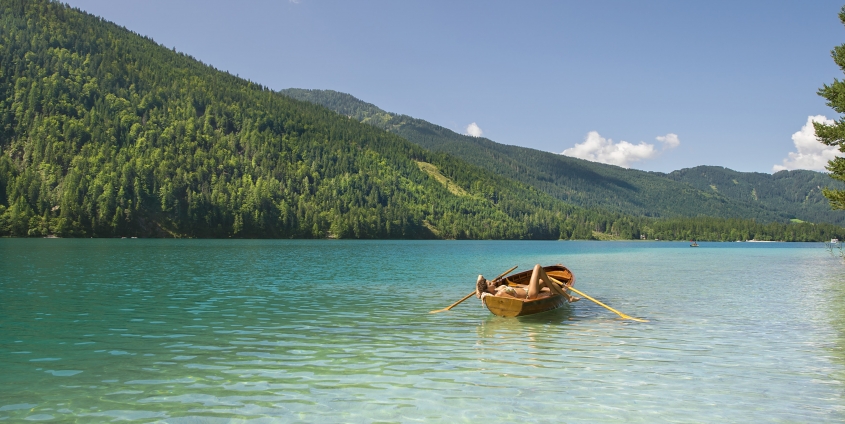 Foto: Copyright Groeger/KW
Foto: Copyright Groeger/KW